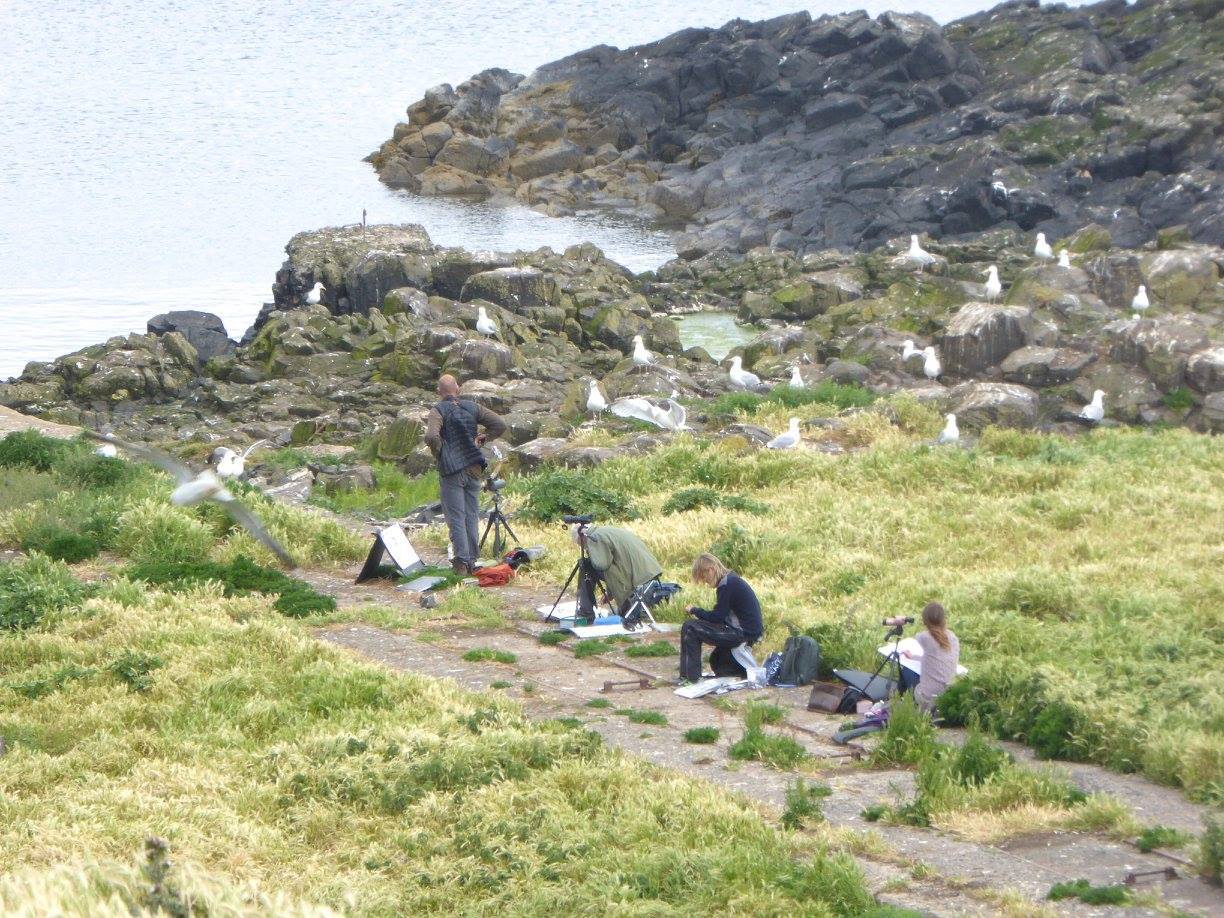Becky Thorley-Fox – Seabird Drawing Course bursary winner 2015
I love to spend as much time as possible outdoors, it is here I find endless sources of inspiration in both the landscape and wildlife. Over the last year or so I have tried to regularly draw birds from life in an attempt to learn to capture them as we see them and move away from the need to take photos. There seems to be no going back with this kind of pursuit, watching wildlife is captivating and I would love that ability to capture these moments in paint with life and energy.

I completed my second artist residency at RSPB reserve Ynys Hir this year where I had the wonderful opportunity to spend time in a diverse range of habitats along the Dyfi estuary observing wildlife patterns and behaviour.

I was very grateful to receive the 2015 SWLA bursary for the John Busby Seabird Drawing course based in East Lothian, Scotland. I had joined the course for a few days the previous year and had been so inspired by the enthusiasm of the group and the sheer intensity of the experience. I had never before witnessed seabird colonies on such a scale. The experience offered the opportunity to freely explore drawing from life with the encouragement and support of a dynamic group of artists and a seemingly endless supply of birds!

This year the week was led by four tutors, Greg Poole, Kitti Jones, Darren Woodhead and John Threlfall. Their support, guidance and tuition throughout the week helped us explore and experiment outside of our comfort zones, challenging our perception and understanding of the moving form. There were evening talks and demonstrations which set the wheels in motion for learning as the week progressed- these were hugely inspiring. The tutors led discussions on form, anatomy, movement, flight, balance, composition, colour, studio development and more. In the mornings we were trying out drawing exercises that revealed our weakest points and offered effective approaches to drawing and ‘feeling form’. We did blind drawings, memory drawings, two pencils taped together exercises and other mark making exercises to develop the way we see, feel and interpret our subject.

It was the first time I’d visited Fidra Island on the Monday. John Steel led us to the best spot for watching Puffins as they came in from the sea, beaks fully loaded, before disappearing into their burrows. This was an exciting moment seeing my first puffin! The Gulls moved through the foliage guarding chicks, a set of eyes and beak ready to attack, we had to move slowly to avoid a noisy onslaught of dive bombings. There was a huge Shag colony set amongst amazing rock formations at the edge of the island, many of us set up here with sketch pads and optics to study these charismatic fuzzy looking young families. I watched a tug of war, two against one, the single Shag triumphed and carefully placed the length of nesting material behind it. The young shags often appeared to be tidying up and arranging their nests, it was very impressive.

We spent a very hot day at Bass Rock, this year thousands of Gannets were up in the air and the ground nesting Gannets had their heads stretched upwards, panting in the heat, I pitied the fluffier Gannet chicks that lay flopped outside the nests. St Abbs was equally spectacular, most of us spent three days here watching large numbers of Guillemots, Kittiwakes, Razorbills and even a family of Stoats were spotted, bounding across cliffs faces, defying gravity.

The Seabird drawing course has been a huge inspiration- an experience that stays with you. A big thank you to SWLA and everybody on the course!